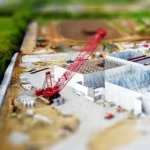What does a structural engineer do?
What is Structural Engineering?
Structural engineering is a branch of civil engineering that manages the planning, design,
analysis, and review of physical structures such as bridges, dams, and buildings. Workers in
this profession employ a wide range of skills and technical knowledge to assure the safety
and strength of major constructions.
What is the job of a structural engineer?
Physical structures are created by structural engineers to withstand various pressures. They
examine the potential effects of gravity and lateral stresses on the building and alter the
designs to make sure it can withstand them. The weight of the structure, including its
equipment, walls, floors, and other components, causes gravity loads, a sort of physical
pressure. External forces like wind, explosions, earthquakes, or other natural occurrences
exert pressure on a structure called a lateral load.
They work to safeguard both completed and ongoing constructions by ensuring the integrity
of each component, including beams, foundations, columns, and floors.
These engineers not only analyze and design structures, but also occasionally assist teams in
tearing down or otherwise dismantling a structure, whether temporarily or permanently. To
protect the security of each team member and the structure itself, they must decide the
safest method for demolishing the building.
What types of projects do structural engineers typically work on?
Structural engineers work on a wide range of projects in the construction industry, where
their expertise is essential for ensuring the safety, stability, and durability of structures.
Here are some common types of projects that structural engineers typically work on:
- Buildings: Structural engineers are heavily involved in the design and construction of
various types of buildings, including residential, commercial, industrial, and
institutional structures. They ensure that buildings can withstand their own weight,
occupants, and environmental loads. - Bridges: Structural engineers play a critical role in the design of bridges, ensuring
they can support the weight of vehicles, pedestrians, and other loads while spanning
rivers, valleys, or other obstacles. - Towers and High-Rise Buildings: For tall structures, such as communication towers
and high-rise buildings, structural engineers focus on dealing with wind and lateral
loads, as well as ensuring vertical stability. - Industrial Facilities: Structural engineers work on the design of industrial facilities,
such as factories and warehouses, to accommodate heavy machinery, storage loads,
and specialized equipment. - Stadiums and Sports Complexes: In sports venues, structural engineers consider
crowd loads, dynamic forces from moving spectators, and special design
requirements for roofs and canopies. - Infrastructure Projects: This includes various civil engineering projects, such as
dams, tunnels, retaining walls, and water supply structures, where structural stability
is crucial. - Seismic and Earthquake Engineering: Structural engineers in seismic-prone regions
focus on designing structures to withstand earthquake forces and minimize damage. - Retrofitting Renovation and: Structural engineers often work on renovating and
retrofitting existing structures to enhance their safety, bring them up to code, or
adapt them for new uses. - Sustainable and Green Buildings: Structural engineers play a role in designing
environmentally friendly buildings that are energy-efficient and sustainable. - Special Structures: This includes unique and challenging structures like cable-stayed
bridges, long-span roofs, and architectural marvels that require specialized
engineering expertise.
In Summary, each project type presents its own set of obstacles and considerations, and
structural engineers must tailor their knowledge and expertise to meet the unique needs of
each project. Their function is critical in ensuring that structures are safe, durable, and
capable of withstanding the forces that they will face during their lives.
Disclaimer: This content is provided solely for your review. Erusu Consultants takes no liability for this article. The reader is advised to form their own opinion. Please consult a Structural Engineer before making any final decisions.







Clare Martin
October 18, 2023I’m thankful for your explanation when you informed us that it is the role of a structural engineer to create physical structures that can withstand various pressures by examining the effects of gravity and lateral stresses on the building. I plan to manage an apartment complex with five floors here in Jersey City, so I need to find a structural engineer for the project when we begin construction next year. I’ll take note of this while II look for a structural engineer operating in New Jersey to hire for my apartment investment soon.
Clare Martin
October 24, 2023It’s good that you elaborated for us that it is the role of a structural engineer to ensure that physical structures can withstand various pressures by examining the effects of gravity and lateral stresses on the building to ensure its integrity. I will be investing in a high-rise condominium project next year, so we need to find a structural engineer to hire for the construction soon if we want the building to be stable and safe for the tenants. I’ll keep this in mind while I look for a structural engineer in Denver to hire for this upcoming construction project.